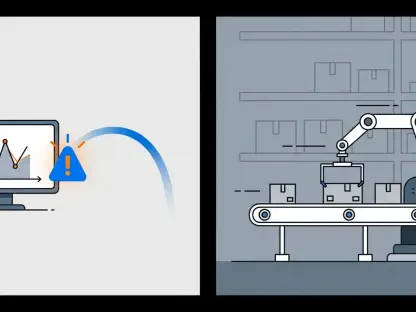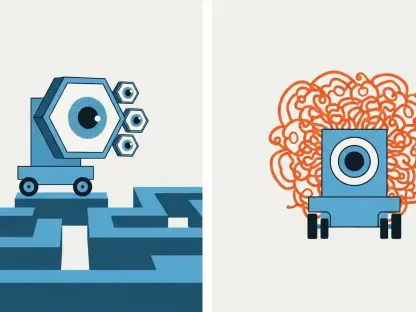In a world where cancer remains one of the leading causes of death globally, the challenge of pinpointing the exact genetic mutations driving tumor growth has never been more critical. Millions of patients await treatments tailored to their unique genetic profiles, yet traditional methods often struggle to distinguish true cancer-causing variants from mere sequencing errors. Enter Google DeepSomatic AI, a groundbreaking tool that promises to transform precision medicine by leveraging artificial intelligence to identify somatic mutations with unprecedented accuracy. This review delves into the capabilities of this innovative technology, exploring how it stands to redefine cancer research and treatment.
Unveiling a New Era in Mutation Detection
Google DeepSomatic AI emerges as a pivotal advancement in the realm of cancer genomics, designed to detect somatic mutations—genetic alterations acquired after birth that often fuel cancer development. Built on the foundation of convolutional neural networks, this tool processes raw sequencing data with a precision that outstrips conventional approaches. Its ability to differentiate genuine tumor-specific variants from noise positions it as a game-changer in the landscape of AI-driven healthcare solutions.
The significance of this technology extends beyond mere detection; it addresses a fundamental hurdle in personalized medicine. By filtering out errors inherent in sequencing processes, DeepSomatic ensures that researchers and clinicians can focus on actionable insights. Its integration into broader precision medicine initiatives highlights a shift toward data-driven, patient-centric care, setting a new benchmark for innovation in the field.
Core Features and Technological Innovations
Harnessing Convolutional Neural Networks
At the heart of DeepSomatic AI lies its use of convolutional neural networks, a deep learning approach that transforms genetic sequencing data into image-like representations for analysis. This method allows the system to meticulously distinguish between normal genetic references, inherited variants, and cancer-specific mutations. Compared to traditional mutation detection tools, this AI-driven technique significantly reduces false positives, offering a level of accuracy previously unattainable.
The impact of this technology is profound, as it tackles the intricacies of genomic data with a nuanced understanding. By processing vast datasets through layered algorithms, DeepSomatic identifies subtle patterns that might indicate a tumor’s origin or progression. This precision not only enhances diagnostic reliability but also paves the way for more targeted therapeutic interventions.
Tumor-Only Mode and Sample Versatility
One of DeepSomatic’s standout features is its tumor-only mode, which enables mutation detection even when normal cell samples are unavailable—a common scenario in blood cancers such as leukemia. This adaptability ensures that the tool remains effective in real-world clinical settings where sample constraints are frequent. Its design prioritizes flexibility, accommodating diverse patient needs without compromising accuracy.
Additionally, DeepSomatic excels in handling challenging sample types, including formalin-fixed paraffin-embedded tissues, often plagued by DNA degradation, and whole exome sequencing data, which focuses on protein-coding regions. This versatility broadens its applicability, making it a valuable asset for analyzing historical or lower-quality samples. Such capabilities underscore its potential to democratize access to advanced genomic analysis across varied medical contexts.
Performance Metrics and Benchmarking Excellence
DeepSomatic AI’s performance has been rigorously tested against a benchmark dataset known as CASTLE, developed in collaboration with UC Santa Cruz Genomics Institute and the National Cancer Institute. Derived from breast and lung cancer samples, this dataset incorporates multiple sequencing platforms to eliminate platform-specific biases, ensuring robust training for the AI model. The result is a tool that consistently delivers high-quality mutation detection across diverse data sources.
When evaluated using metrics like the F1-score, DeepSomatic demonstrates clear superiority over existing methods. It excels particularly in identifying complex mutations such as insertions and deletions, achieving remarkable accuracy on platforms like Illumina and Pacific Biosciences. These metrics affirm its status as a leading solution, capable of addressing some of the most persistent challenges in cancer genomics with measurable success.
Real-World Impact on Cancer Research
In practical applications, DeepSomatic AI has already shown transformative potential through collaborations like the one with Children’s Mercy in Kansas City. Here, the tool successfully identified both known and novel variants in pediatric leukemia samples, even when limited to tumor-only data. Such achievements highlight its capacity to uncover critical genetic insights that can directly inform treatment strategies.
Beyond specific case studies, the tool’s ability to generalize to cancer types outside its training data—such as glioblastoma, a highly aggressive brain cancer—demonstrates its broad relevance. This adaptability suggests that DeepSomatic can support a wide array of research and clinical efforts, from guiding existing therapies to inspiring the development of new ones. Its role in precision medicine is thus not just supportive but potentially revolutionary.
Challenges in Adoption and Refinement
Despite its advancements, DeepSomatic AI faces hurdles in detecting low-frequency somatic mutations, which are often obscured by background noise in tumor samples. Continuous refinement of its algorithms is necessary to keep pace with emerging cancer types and evolving sequencing technologies. These technical challenges reflect the complexity of genomic data and the need for ongoing innovation.
Regulatory and adoption barriers also pose significant obstacles to integrating this tool into widespread clinical practice. Ensuring compliance with medical standards and gaining trust from healthcare providers require strategic efforts. Google’s commitment to open-access sharing of DeepSomatic and its benchmark dataset is a step toward mitigating these issues, fostering collaboration and encouraging broader implementation.
Looking Ahead in Precision Medicine
The trajectory of DeepSomatic AI points to exciting possibilities for enhancing AI algorithms further, potentially extending its applications beyond cancer to other complex diseases. As computational power and data availability grow, the tool could evolve to address an even wider spectrum of genetic conditions. This expansion could redefine diagnostic and therapeutic approaches on a global scale.
Moreover, its long-term impact on healthcare might set new standards for mutation detection, fundamentally altering how personalized treatments are developed and delivered. From 2025 onward, initiatives to integrate such technologies into routine clinical workflows could accelerate, promising improved patient outcomes through increasingly tailored medical interventions. The vision of a future where every patient benefits from precise genetic insights is within reach.
Final Reflections and Next Steps
Looking back, Google DeepSomatic AI has carved a notable path in cancer genomics, delivering unmatched precision and adaptability that have reshaped mutation detection. Its deployment in varied clinical and research settings underscores a shift toward data-driven healthcare, while its open-access model fosters global collaboration. The journey of this technology highlights both its transformative power and the complexities of integrating AI into medicine.
Moving forward, stakeholders must prioritize refining detection capabilities for elusive low-frequency mutations through advanced algorithmic updates. Collaborative efforts between tech developers, researchers, and clinicians should focus on streamlining regulatory pathways to ensure swift adoption. By investing in training programs for medical professionals and expanding benchmark datasets, the full potential of DeepSomatic can be harnessed, ultimately bridging the gap between cutting-edge innovation and tangible patient benefits.









